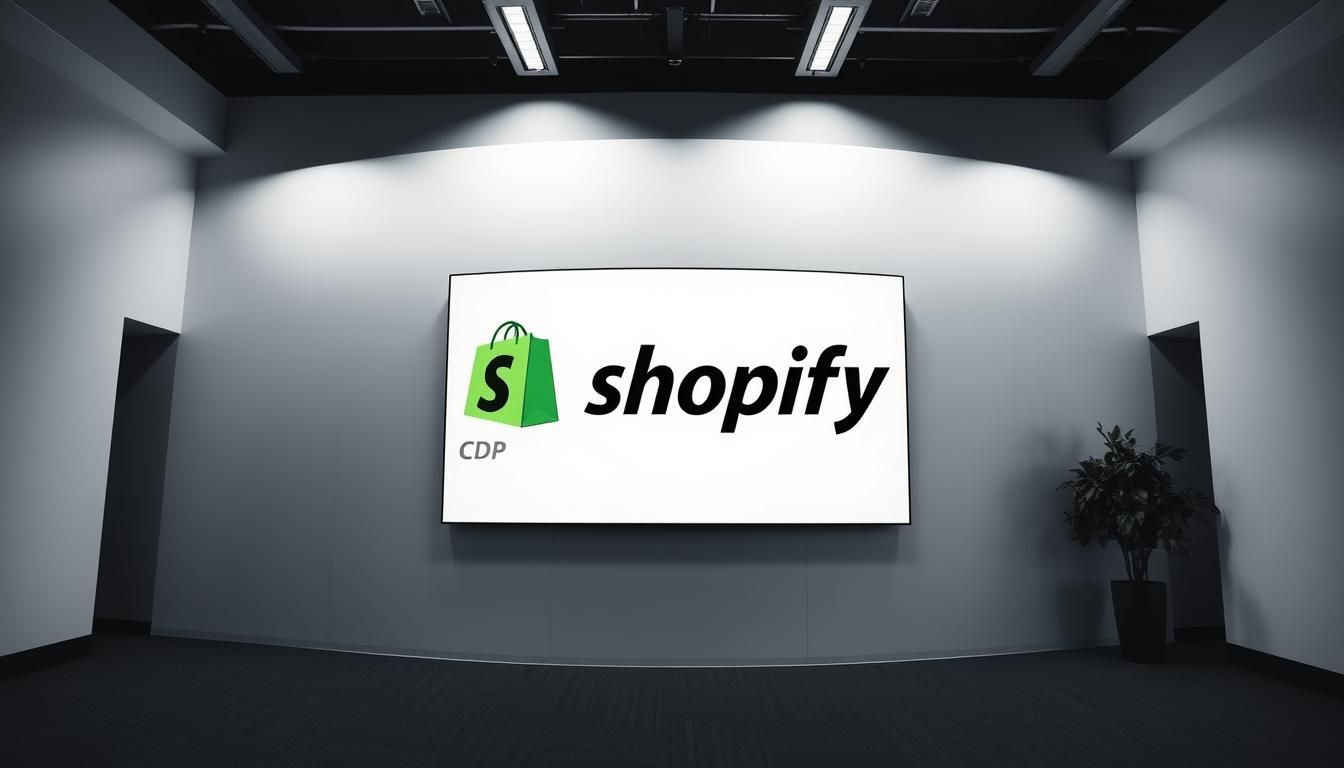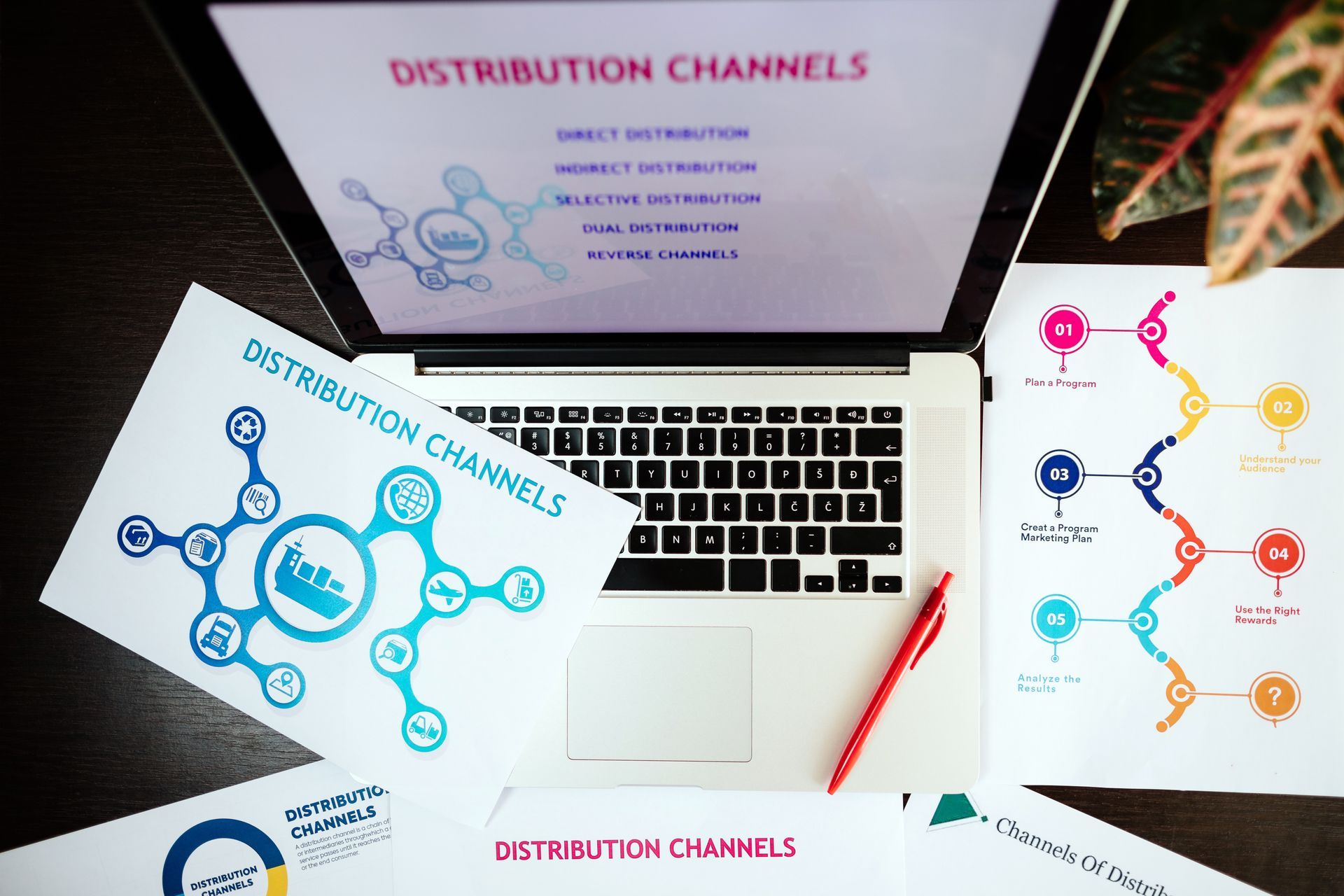LayerFive CDP for Shopify: Boost Retention 20%

Did you know Shopify merchants can increase customer retention by up to 20% with a Customer Data Platform (CDP)? At LayerFive, we help brands use their data better. This improves marketing and cuts costs for data privacy compliance.
Our CDP is made for Shopify merchants to use their customer data wisely. It gives a clear view of how customers interact and helps tailor marketing. With LayerFive's CDP, Shopify merchants can keep more customers and grow their business.
Key Takeaways
- LayerFive's CDP helps Shopify merchants boost customer retention by up to 20%.
- A unified customer view enables personalized marketing strategies.
- LayerFive's solutions optimize marketing performance and reduce data privacy compliance costs.
- Shopify merchants can drive business growth by leveraging LayerFive's CDP.
- LayerFive's CDP provides a deep understanding of customer interactions.
The Growing Data Crisis for E-commerce Brands
The digital world is getting more complex, making it hard for e-commerce brands to handle their customer data well. This leads to billions of dollars in marketing spend being wasted because of unclear customer behavior and preferences.
Why Billions in Marketing Spend Goes to Waste
E-commerce brands find it tough to see their customers as a whole because of data silos. This makes their marketing campaigns less effective. They can't target their audience well, wasting a lot of money. It's estimated that billions of dollars are lost every year.
The True Cost of Fragmented Customer Data
Fragmented customer data costs more than just wasted marketing money. It also hurts customer happiness and loyalty. Brands can't offer personalized experiences without a clear view of their customers. Using a Customer Data Platform (CDP) like LayerFive can help e-commerce brands improve their marketing.
Customer Data Platform: The Backbone of Modern Marketing
The Customer Data Platform is at the core of good marketing strategies. It collects, unifies, and organizes customer data from many sources. "A well-implemented CDP is the cornerstone of a successful marketing strategy," it helps businesses understand their customers better. This way, they can make their marketing efforts more effective.
Defining CDPs and Their Core Functions
A Customer Data Platform is a software that gathers and unifies customer data from different sources. It creates a single, detailed customer profile. The main tasks of a CDP are collecting data, uniting it, and making it ready for use. This helps businesses understand their customers' behaviors, preferences, and needs better.
Key features of a CDP include:
- Data ingestion from multiple sources
- Advanced identity resolution
- Segmentation and profiling
- Integration with marketing tools
How CDPs Differ from DMPs and CRMs
CDPs, DMPs (Data Management Platforms), and CRMs (Customer Relationship Management systems) are all marketing tools. But they have different roles. Unlike DMPs, which use anonymous data for ads, CDPs work with identifiable customer data. CRMs focus on sales and don't unify data like CDPs do.
The key difference lies in their primary functions:
"CDPs are designed to create a unified customer view across online and offline channels, enabling personalized marketing at scale."
Our Marketing Data Platform fills these gaps. It unifies consumer identities, improves attribution, and ensures GDPR/CCPA compliance. This gives a strong base for modern marketing.
Shopify's Data Ecosystem: Capabilities and Limitations
Knowing about Shopify's data ecosystem is key for merchants wanting to boost their marketing and get better customer insights. Shopify is a strong platform for online stores, with tools for analyzing data and engaging with customers.
Native Analytics vs. Enterprise Data Needs
Shopify's built-in analytics tools give insights into how customers behave and sales trends. But, for big businesses, these tools don't offer enough depth or customization. Big businesses need more complex data analysis, like detailed segmentation and tracking how customers interact with different parts of the business.
- Native analytics tools give basic insights into customer behavior.
- Big businesses need more advanced data analysis features.
- Limitations in native tools can make marketing strategies less effective.
Common Data Blindspots for Shopify Merchants
Shopify merchants often miss out on important data, like tracking customers across different channels and detailed customer profiles. These gaps can mean missing chances for personalization and targeted marketing.
- Can't track customers across multiple channels.
- Don't have detailed customer profiles.
- Don't have enough data on customer behavior outside of Shopify.
By knowing these gaps, merchants can look for extra solutions, like LayerFive. This can improve their data ecosystem and help increase ROI and customer trust.
LayerFive's Marketing Data Platform: An Overview
LayerFive's Marketing Data Platform is a solution for Shopify merchants. It helps manage customer data across different touchpoints. This platform integrates data from various sources, giving merchants a clear view of their customers.
Unified Customer Data is central to LayerFive's platform. It helps merchants create detailed customer profiles. This makes it easier to personalize marketing and improve customer experiences.
"LayerFive's Marketing Data Platform is a game-changer for Shopify merchants," experts say. It unifies customer data and boosts marketing campaigns.
Key Features and Technical Architecture
LayerFive's platform has a strong technical base. It supports the integration of different data sources. Key features include advanced data integration, real-time processing, and audience segmentation tools.
These features help merchants use their data well. They create marketing campaigns that connect with their audience.
Shopify-Specific Optimizations
LayerFive has tailored its platform for Shopify merchants. It ensures smooth integration with Shopify. This lets merchants use their data fully, improving marketing and growing their business.
By using LayerFive's platform, Shopify merchants get a unified customer view. This leads to more personalized and effective marketing. The platform's data integration and real-time insights help merchants make better decisions. This boosts customer loyalty and retention.
Unified Customer Identity: The Foundation of Personalization
A unified customer identity is key for good personalization in e-commerce. Today, customers use many devices and platforms to interact with brands. This creates a complex web of identities that need to be unified for seamless, personalized experiences.
LayerFive's Customer Data Platform (CDP) tackles this challenge. It brings together customer data from various sources into one profile. This helps businesses understand what their customers like and need in real-time.
Cross-Device and Cross-Channel Identity Resolution
It's important to resolve identities across devices and channels. LayerFive's CDP uses advanced algorithms to link customer interactions across different platforms. This includes social media, email, and website visits.
This method uses deterministic and probabilistic matching techniques to accurately identify customers. Even when data is scattered or missing, it works. This gives businesses a full view of the customer journey, helping them send targeted marketing campaigns.
Creating 360° Customer Profiles in Real-Time
LayerFive's CDP makes 360° customer profiles by gathering data from many sources. This includes CRM systems, customer feedback, and transactional data. All this data is processed in real-time to give up-to-date insights.
With these insights, businesses can better segment their audience. They can spot high-value customers and craft marketing strategies that boost engagement and conversion. The ability to update customer profiles in real-time keeps marketing efforts relevant and personalized.
Audience segmentation gets more precise with LayerFive's CDP. It lets businesses sort customers based on their behaviors, preferences, and demographics. This is vital for creating personalized experiences that connect with customers.
Beyond Last-Click: Advanced Attribution Models
To really understand how well marketing works, we can't just look at the last click. Traditional models often miss the big picture. LayerFive's Customer Data Platform (CDP) offers advanced tools to see marketing efforts more clearly.
The Limitations of Shopify's Default Attribution
Shopify's default model mainly looks at the last click. But today's customers often interact with many touchpoints before buying.
The main issues are:
- Inaccurate attribution: It misses the impact of early interactions.
- Lack of cross-channel visibility: It doesn't see interactions across different channels.
- Inability to handle complex customer journeys: It simplifies the path to purchase too much.
Multi-Touch Attribution with LayerFive
LayerFive's CDP uses multi-touch attribution. This method values each touchpoint in the customer's journey. It gives a detailed look at how well marketing works.
Key benefits are:
- Comprehensive view: It tracks the whole customer journey across many channels.
- Accurate attribution: It gives credit to each marketing touchpoint for its role in sales.
Using LayerFive's advanced models, businesses can understand their marketing better. This leads to smarter decisions and better marketing strategies.
Data Privacy Compliance Without the Headache
Many businesses struggle with data privacy compliance. LayerFive makes it easier. Following rules like GDPR and CCPA is key to keeping customer trust and avoiding big fines.
Navigating GDPR and CCPA Requirements
The GDPR and CCPA are big deals for businesses worldwide. GDPR compliance is a must for EU businesses or those handling EU data. CCPA rules apply to California businesses or those handling California data. Getting to know these rules is the first step to following them.
LayerFive's Automated Compliance Tools
LayerFive has tools to help meet GDPR and CCPA needs. These tools include data encryption and access controls. They also manage data subject rights, keeping customer data safe. With LayerFive's CDP, businesses can keep up with robust data privacy practices without getting bogged down.
In short, data privacy compliance is more than a legal must. It's a way to stand out. By picking LayerFive, businesses can meet top data privacy standards. This boosts customer trust and loyalty.
Precision Segmentation for Targeted Marketing
Precision segmentation is key to unlocking Marketing Technology's full power. It divides customers into groups based on their behavior, preferences, and demographics. This way, businesses can make marketing campaigns that really speak to their audience.
Building Dynamic Customer Segments
LayerFive's Customer Data Platform (CDP) helps businesses create dynamic customer segments. It uses real-time data and Customer Insights to do this. Marketers can then find out who their most valuable customers are and what they need.
By using advanced Audience Segmentation, businesses can make segments that are both detailed and relevant. This helps them understand their customers better.
Activating Segments Across Marketing Channels
Once segments are made, they can be used in different marketing channels. This includes email, social media, and paid ads. It makes sure the right message reaches the right customer at the right time.
By using LayerFive's CDP with their marketing tools, businesses can make their marketing smoother. This improves their overall efficiency.
In conclusion, precision segmentation is a strong tool for targeted marketing. With LayerFive's CDP and advanced Audience Segmentation, businesses can make marketing campaigns that really work.
The20% Retention Boost: How LayerFive Transforms Customer Loyalty
LayerFive uses advanced data analytics to boost customer loyalty by up to 20%. This big jump in keeping customers comes from spotting at-risk customers early. It also involves setting up automated workflows and always checking and improving how well these work.
Identifying At-Risk Customers Before They Leave
LayerFive's Customer Data Platform (CDP) finds customers likely to leave early. It looks at how they act, what they buy, and how they interact. This way, it makes a detailed profile of each customer, showing who might leave.
Key signs of at-risk customers include:
- Buying less often
- Not responding to marketing
- Changing how they act
Automated Retention Workflows
LayerFive's CDP makes it easy to bring back customers who might leave. It sends out personalized emails, special deals, and content made just for them. This saves time and boosts customer loyalty.
"Automated retention workflows have been a game-changer for our customer retention strategy," says a happy LayerFive customer.
Measuring and Optimizing Retention Metrics
To make sure their plans work, businesses need to track and improve their retention numbers. LayerFive's CDP gives detailed insights into customer loyalty. It shows how well things are going by looking at things like how much customers spend over time and how often they stay.
Using LayerFive's CDP helps businesses grow by keeping customers happy. With a focus on using data to keep customers loyal, businesses can see a big increase in how well they keep customers. This leads to lasting growth and success.
Implementation Roadmap for Shopify Merchants
To get the most out of LayerFive's CDP on Shopify, a well-planned implementation is key. This roadmap will guide Shopify merchants through the technical needs, setup, data migration, and team onboarding. These steps are essential for a successful integration.
Technical Requirements and Setup Process
The technical needs for implementing LayerFive's CDP include compatibility with Shopify's API and a secure data connection. The setup process involves:
- Configuring data streams from Shopify to LayerFive
- Setting up data mapping to unify customer profiles
- Integrating LayerFive with existing marketing tools
Data Migration and Team Onboarding
Data migration moves existing customer data from Shopify to LayerFive. This ensures all customer interactions are captured and unified. Team onboarding trains marketing, sales, and customer support teams to use the CDP's features.
LayerFive's support team helps with data migration and team onboarding. They ensure a smooth transition. Our tools work on Shopify or other platforms, meeting your needs.
B2B vs. B2C: Tailoring LayerFive to Your Business Model
It's key to know the difference between B2B and B2C business models to get the most out of LayerFive's CDP. B2B companies aim to build lasting relationships with other businesses. On the other hand, B2C companies deal directly with individual customers. LayerFive can serve both, giving a unified customer view that boosts marketing.
Unique Data Considerations for B2B Shopify Stores
B2B Shopify stores need a detailed data plan because of their complex transactions. They handle bulk orders, negotiated pricing, and longer sales cycles. LayerFive's CDP understands these, helping businesses sort customers by company size and purchase history.
- Identify high-value business customers
- Create personalized marketing campaigns
- Analyze customer behavior for better retention
Optimizing the B2C Customer Journey
The B2C customer journey is straightforward but complex. LayerFive makes real-time customer profiles for instant personalization. This way, B2C companies can refine their marketing, boosting customer loyalty and engagement.
- Enhance customer experience through personalization
- Utilize data for targeted marketing campaigns
- Monitor customer behavior for retention strategies
LayerFive is flexible, working well for both B2B and B2C businesses. By understanding your unique needs, you can fine-tune your marketing for the best results.
ROI Analysis: Making the Business Case for a CDP
LayerFive's CDP helps Shopify stores of all sizes boost ROI and gain consumer trust. It unifies customer data and offers insights for better decisions. This leads to higher retention and revenue.
Creating a solid business case for a CDP requires a detailed cost-benefit analysis. You need to look at the initial costs, ongoing expenses, and the expected returns.
Cost-Benefit Analysis for Different Store Sizes
Small to medium-sized Shopify stores can invest in LayerFive for $1,000 to $5,000. This investment brings benefits like better customer segmentation and personalized marketing. It can increase revenue by 10-20%.
Larger enterprises might spend $10,000 to $50,000 or more. But the returns can be huge, with revenue increases of 15-30% or more. This is thanks to more effective marketing and better customer loyalty.
Expected Timeline for Measurable Results
The time it takes to see results from a CDP varies. Small to medium-sized businesses might see initial results in 3-6 months. More significant ROI comes in 6-12 months. Larger enterprises might need 6-18 months due to their complex operations and data needs.
Understanding costs, benefits, and the timeline helps Shopify merchants decide on LayerFive's CDP. With its powerful features and significant ROI, LayerFive is a key tool for business growth and customer loyalty.
Future-Proofing Your Marketing Data Strategy
The world of digital marketing is always changing. It's vital to make your data strategy strong and flexible. This way, you can handle the fast pace of today's digital world.
Preparing for a Cookieless Future
The move to a world without cookies is a big challenge for marketers. To get ready, companies need to find new ways to collect and track data. Here are some important steps:
- Start collecting first-party data
- Use privacy-compliant tracking tools
- Try contextual ads
By taking these steps, businesses can follow new privacy rules and keep their marketing strong.
Scaling Your Data Infrastructure as You Grow
As your business grows, so should your data setup. Scalability is essential for dealing with more data and complexity. Here's how to do it:
- Choose cloud-based data solutions
- Get advanced data analytics tools
- Check data quality often
Scaling your data infrastructure right helps your business grow. It keeps your marketing data valuable and reliable.
Conclusion: Transforming Shopify Marketing with Unified Customer Data
LayerFive's Customer Data Platform (CDP) changes the game for Shopify marketing. It brings together all customer data into one place. This makes marketing more effective and targeted.
Shopify merchants can now see their customers in one clear picture. This helps them offer better experiences and keep customers coming back. It also helps businesses grow their sales.
LayerFive makes it easier to handle complex marketing data. This means every dollar spent on marketing works harder. With our CDP, merchants can make their marketing campaigns more precise and effective.
Using LayerFive's CDP, Shopify merchants can stay ahead in the data world. They get a unified view of their customers. This lets them confidently move forward in the ever-changing world of Shopify Marketing.
FAQ
What is a Customer Data Platform (CDP) and how does it differ from a Data Management Platform (DMP)?
A CDP collects and unifies customer data from various sources. It creates a single, detailed customer profile. Unlike a DMP, which focuses on anonymizing data for ads, a CDP helps personalize marketing and customer experiences.
How does LayerFive's CDP integrate with Shopify?
LayerFive's CDP works well with Shopify. It lets merchants combine customer data from different sources. This helps Shopify merchants use their data better, improving marketing and keeping customers.
What are the benefits of using a CDP for customer retention?
Using a CDP can greatly improve keeping customers. It helps create personalized experiences and spot at-risk customers. By understanding customer behavior, businesses can tailor their marketing, boosting loyalty.
How does LayerFive's CDP address data privacy compliance?
LayerFive's CDP focuses on data privacy. It offers tools for GDPR and CCPA compliance. This helps businesses follow data rules, avoiding penalties.
Can LayerFive's CDP be used for both B2B and B2C business models?
Yes, LayerFive's CDP works for both B2B and B2C. It considers the unique needs of each, helping businesses improve their marketing and customer journey.
What is the expected return on investment (ROI) for implementing LayerFive's CDP?
The ROI for LayerFive's CDP depends on several factors. But, by improving customer retention and marketing, businesses can see big returns. A cost-benefit analysis can show the expected ROI for a business.
How does LayerFive's CDP prepare businesses for a cookieless future?
LayerFive's CDP prepares businesses for a world without cookies. It offers a first-party data strategy. This lets businesses collect and unify data directly from customers, reducing reliance on third-party cookies.
You might also like:




